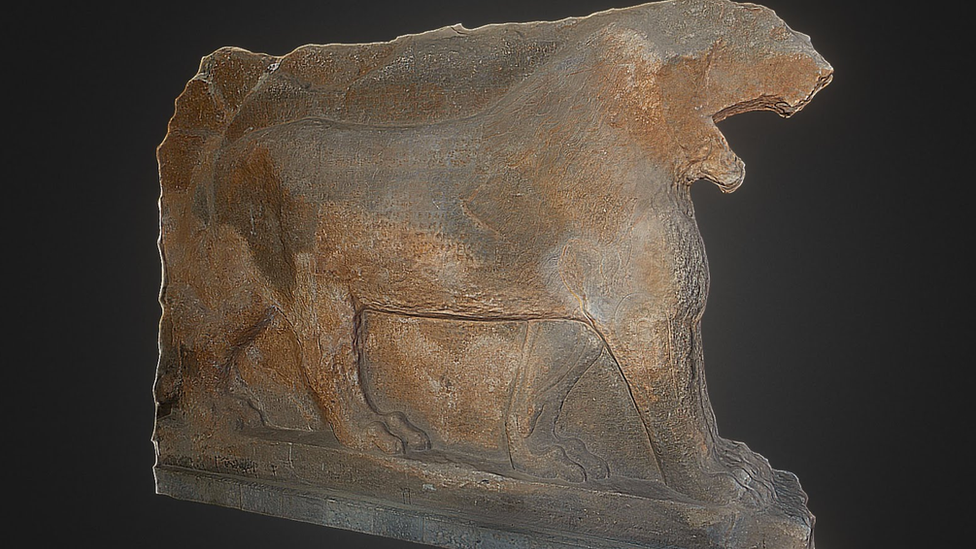Google lets destroyed Lion of Mosul roar again
- Published

The recreation of the Lion of Mosul will be on show at the Imperial War Museum in London
Google has recreated an ancient statue destroyed by the Islamic State group in 2015, using crowd-sourced pictures and 3D printing.
The Lion of Mosul was a colossal Assyrian guardian lion which stood at the entrance of the Temple of Ishtar in Nimrud, Iraq.
It is the first time Google Arts & Culture has created an object or artwork as part of a museum exhibition.
The public can see it at the Imperial War Museum in London from 5 July.
Online visitors, meanwhile, can play around with the 3D model and zoom in to study intricate details.
The project is part of the museum's Culture Under Attack season, which sees it team up with Google Arts and Culture and Historic England to explore the impact of war on culture around the world.
Google Arts and Culture is a free way to explore art, history and wonders of the world, from Van Gogh's bedroom paintings to Mandela's prison cell, for those who cannot visit exhibitions in person. It has so far put artefacts from 1,800 museums online.
Chance Coughenour, preservation lead at Google Arts & Culture, said: "It's been heart-breaking to see the destruction of so many unique artefacts and archaeological sites in recent years, however, Culture Under Attack highlights the potential of technology - both in terms of digitally preserving culture and telling these amazing stories in engaging new ways."
Carl Warner, head of Cold War and Late 20th Century at Imperial War Museums, added: "War has always damaged heritage, but modern warfare is particularly destructive: homes, neighbourhoods, towns and whole cities are under threat from modern shells and bombs.
"We hope that our Culture Under Attack season and collaboration with Google Arts & Culture invites visitors to question how we respond as individuals, communities and nations to the void often left behind."
Nerissa Taysom is a curator at the Watts Gallery, near Guildford, in Surrey. She thinks more should follow suit.
"It's exciting to see museums working with tech companies to make lost culture visible and accessible. Using reproductions to teach the public about making and meaning has a long history and by repositioning such objects in their wider political context, this exhibition is a vital provocation to us all about how and why we should protect our cultural heritage."